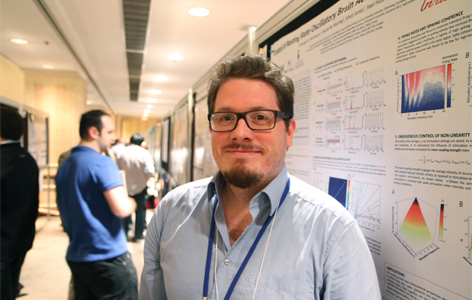
The Krembil Research Institute recently recruited a computational neuroscientist—Dr. Jérémie Lefebvre—who will enhance its already-strong expertise in this area. Computational neuroscientists, also called theoretical neuroscientists, use mathematics and computer models to help explain how the cells and circuits of the brain work. In turn, these models can be used to predict how the brain processes information or how it will respond to a particular treatment intervention.
Brain oscillatory activity—coordinated electrical impulses within and across brain regions—occurs at very specific frequencies. This coordinated electrical firing can be impaired in disorders including major depression, autism and schizophrenia. Therefore, researchers have asked whether manipulating these brain rhythms, either by implanting an electrode into the brain or by electrically stimulating the brain surface via the scalp, could be of therapeutic value.
To address this question, Dr. Lefebvre developed a computational model, recently published in PLoS Biology (PMID: 27023427), to explain how abnormal brain activity might be rescued by electrical stimulation and how treatment response differed according to participants’ changing state of mind. Experimental results in humans were in line with Dr. Lefebvre’s model’s predictions, showing that stimulation response differed according to participants’ attention levels. The next step will be to use his model to personalize electrical stimulation treatment based on individuals’ oscillatory activity.
You can find out more about Dr. Lefebvre’s work by visiting his lab website. He is currently accepting postdoctoral research fellows and graduate students. Interested applicants should contact him directly.




